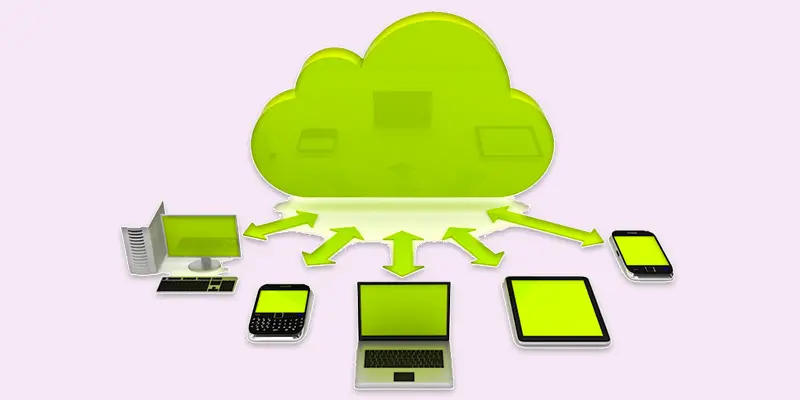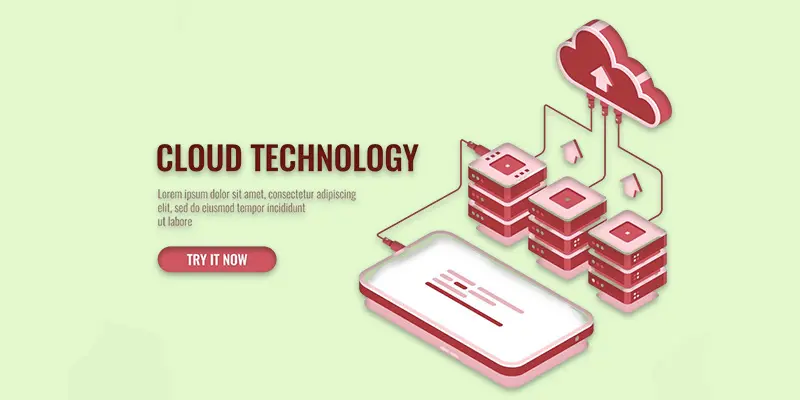What is Cloud Computing? Examples, Purpose, Importance and its Work
Published: 22 Apr 2025
Cloud Computing Services for Beginners
Cloud computing powers over 90% of today’s digital services, from streaming to file storage. Ever wondered where your photos go when you save them to the cloud? Many users feel stuck managing files across different devices or losing data when something crashes. One day, you’re emailing a file, the next day, you’re accessing it from your phone halfway across the world. That’s the magic of cloud computing.
What is a Cloud Computing?
Cloud computing is the practice of managing, storing, and accessing data via the internet rather than on your personal computer. It enables you to use tools, files, and apps at any time and from any location. Just like saving a photo to Google Drive instead of your laptop.

What is the Simple Definition of Cloud Computing
Using the internet to store, retrieve, and control data and services rather than your own device is known as cloud technology. It makes everything available online, anytime.
Cloud Computing Examples in Real Life
Here are some simple examples of cloud computing
- Google Drive: Storing and sharing files online.
- Gmail: Accessing your email from any device.
- Spotify: Streaming music without downloading.
- iCloud: Backing up photos and contacts from your iPhone.
- Amazon Web Services (AWS): Hosting websites and apps for businesses.
- Netflix: Watching movies stored in the cloud.
- Microsoft Office 365: Creating and editing documents online.
Importance of Cloud Computing in Daily Life
Because it enables users to access their data and apps at any time and from any location, cloud computing is significant. This flexibility saves time and helps businesses work more efficiently, as they don’t need to rely on expensive physical hardware.
Additionally, by doing away with the requirement for servers and storage on-site, cloud computing lowers expenses. It also improves data security, as cloud providers often have advanced systems in place to protect information from loss or theft.

What is the Main Purpose of Cloud Computing
Making it simple for individuals and organizations to store, retrieve, and handle data online rather than on their own devices is the goal of cloud computing.
- Data Storage
- Remote Access
- Scalability
- Cost Efficiency
- Flexibility
- Security
- Collaboration
- Backup and Recovery
Data Storage
Data storage in cloud computing means keeping your files, photos, and documents online instead of on your own device. In this manner, you can access them from any location with internet access.
Remote Access
Remote access in cloud computing allows you to use your files, apps, and data from any device, no matter where you are. All you need is an internet connection.
Scalability
In cloud computing, scalability refers to the simplicity with which you can expand or contract your storage and resources as required. This helps you manage costs and grow without worrying about running out of space.
Cost Efficiency
Cost efficiency in cloud computing means you only pay for the storage and services you actually use. This helps save money compared to buying and maintaining your own hardware.
Flexibility
You may access your data and apps from any device, anywhere, at any time, thanks to cloud computing’s flexibility. It gives you the freedom to work on the go without being tied to one location.
Security
Security in cloud computing means protecting your data with advanced measures like encryption and secure logins. This helps keep your information safe from unauthorized access and loss.
Collaboration
Collaboration in cloud computing allows multiple people to work on the same files or projects at the same time, from different locations. It makes teamwork easier and faster.
Backup and Recovery
Backup and recovery in cloud computing means storing copies of your data online, so if something goes wrong, you can easily restore it. This helps protect against data loss from accidents or failures.
How Cloud Computing Works Step by Step
Here’s How does cloud computing work
- Access via Internet: You connect to the cloud through the internet, not needing to store data on your own devices.
- Data Storage: Your files and data are stored on remote servers (cloud providers’ data centers).
- Remote Processing: Cloud services process your requests (e.g., running apps, storing data) through powerful servers in the cloud.
- Access from Any Device: Any internet-connected device can provide you access to your cloud data.
- Cloud Services: Cloud providers offer services like storage, computing power, and applications (e.g., Google Drive, AWS).
- Security: Cloud providers use encryption and other measures to keep your data safe and private.

Conclusion About What is Cloud Computing and How Does it Work
Cloud computing has transformed how individuals and businesses manage data, providing greater flexibility and the ability to scale easily. I recommend embracing cloud services for their efficiency and cost-effectiveness. Whether you’re running a startup or expanding your business, the cloud can provide you with the tools you need to grow. Take the next step today and explore the many cloud computing solutions available.
FAQS
Using the internet to store and retrieve data and applications rather than a computer is known as cloud computing. It works by using remote servers to store and process data, making it easy to access from anywhere.
Yes, cloud computing is in high demand because businesses and individuals rely on it for data storage, software, and services. More companies are moving to the cloud every day for its convenience and cost-effectiveness.
Online courses, platforms like Coursera or Udemy, and even certifications provided by AWS, Google Cloud, and Microsoft Azure may teach you cloud computing abilities.
Coding is not always required, but having basic coding knowledge can be helpful, especially for developers working with cloud platforms or creating cloud-based applications.
For newcomers, the Google Associate Cloud Engineer and AWS Certified Cloud Practitioner credentials are excellent places to start.
Cloud computing is used because it provides easy access to data and applications, helps reduce costs, and offers flexibility for businesses and individuals to scale their operations quickly.
Businesses can quickly cooperate, scale up or down as needed, and safeguard and retrieve data remotely thanks to cloud computing. It lowers expenses and increases efficiency.
Early in the new millennium, cloud computing gained popularity due to the introduction of services like Amazon Web Services (AWS) in 2006.
The concept of cloud computing was popularized by companies like Amazon, Google, and Microsoft. However, the idea of delivering computing as a service dates back to the 1960s with pioneers like John McCarthy.

- Be Respectful
- Stay Relevant
- Stay Positive
- True Feedback
- Encourage Discussion
- Avoid Spamming
- No Fake News
- Don't Copy-Paste
- No Personal Attacks

- Be Respectful
- Stay Relevant
- Stay Positive
- True Feedback
- Encourage Discussion
- Avoid Spamming
- No Fake News
- Don't Copy-Paste
- No Personal Attacks





